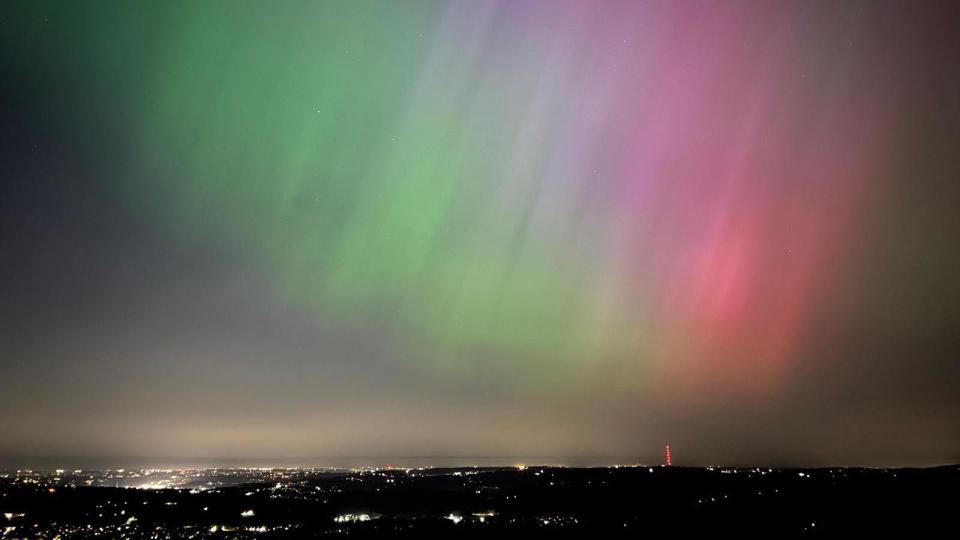How aurora fever put scientists' app up in lights
Before the dazzling Northern Lights array lit up UK skies on Friday, there were warnings that the solar storm might cause disruption to technology on Earth.
And the prediction proved true for the equipment at belonging to one team at Lancaster University.
But it was not geomagnetic activity that caused the problem - rather the sudden surge interest in all things aurora borealis.
Jim Wilde, a professor in Space Physics who runs the AuroraWatch UK website and app from the university, said it nearly buckled under the strain of the increased traffic it received on Saturday.
"The servers were working hard during and after to keep up", he said.
Social media was awash with photos of bright pinks, purples and greens splashed across the night sky when the aurora was visible across most parts of the UK on Friday night.
AuroraWatch UK monitors space weather and delivers automated alerts via social media when the lights appear.
That meant it, and other sites of its kind, suddenly became very popular as people clamoured to see whether the display would be repeated on Saturday.
"There are similar sites around the world and all of them were really struggling to keep with demand," Prof Wilde said.

While critics have suggested the service delivers out-of-date information, as the alerts are delivered in real time, Prof Wilde said it is almost impossible to accurately predict when the lights will appear.
"Predicting space weather is really challenging," Prof Wilde said.
"The geo-storm was activated by an eruption on the sun and the discharge from that eruption takes two days to get to the earth.
"You can get make measurements as it passes satellites but some of the factors are impossible predict.
"In terms of providing an accurate forecast, no one has that capability."
'Big operation'
Prof Wilde said the Northern Lights were a beautiful result of geomagnetic storms in space, but these storms can be damaging to technology and people on earth.
"The Met Office runs a space weather forecast on behalf of the government and that’s quite a big operation, they have a team monitoring it 24 hours a day," he said.
"They have to keep an eye on it because some of our human tech, like satellites and power grids, can be interfered with by space weather.
"The biggest geo0storm recorded happened in 1859 and it pushed the northern lights down to the Caribbean.
"But the geo-activity impacted the telegraph system which lead to operators being electrocuted.
"As society become more reliant on technology, the prediction are going to become more important."
What are the northern lights?
The Northern Lights are caused by atoms with electric charges, called charged particles.
The lights appear when these charged particles are shot out from the sun and hit gases in the Earth's atmosphere.
In this instance, the Sun is experiencing an extreme geomagnetic storm, which is sending out solar winds with those particles into the solar system.
We see different colours in the sky when the various gases in the Earth's atmosphere are energised by the charged particles.
The two most common gases in the Earth's atmosphere are oxygen and nitrogen. Oxygen atoms glow green - the colour often most abundant in the Northern Lights.
Nitrogen atoms emit purple, blue and pink.
Listen to the best of BBC Radio Lancashire on Sounds and follow BBC Lancashire on Facebook, X and Instagram. You can also send story ideas to northwest.newsonline@bbc.co.uk

